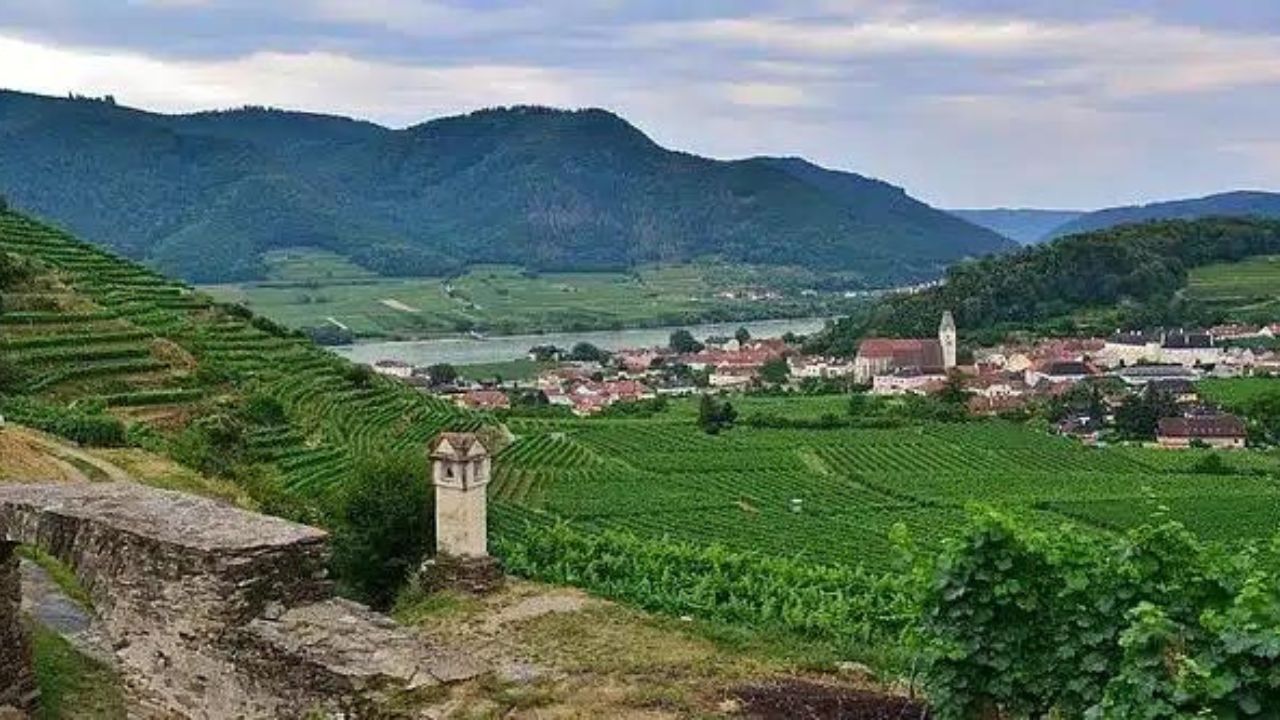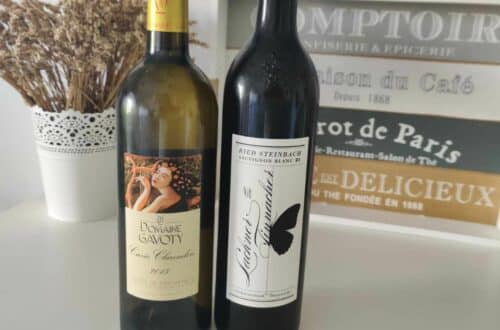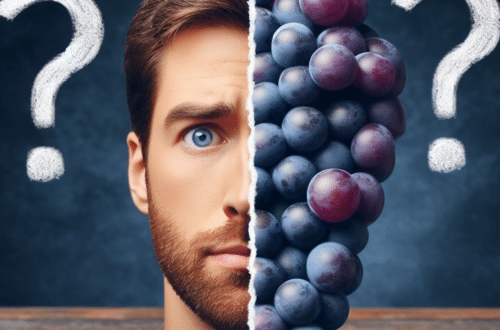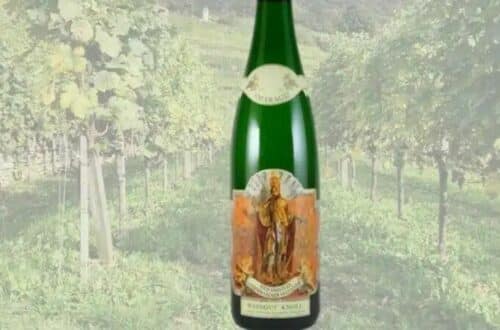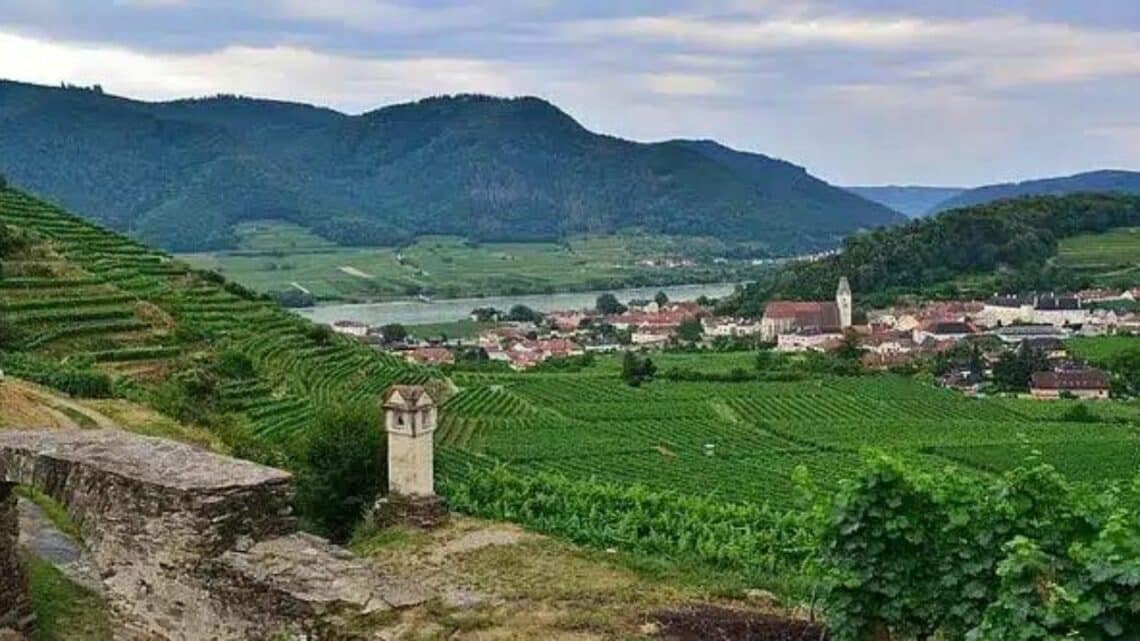
Wachau’s Grüner Veltliner Viticulture Challenges And Solutions
The Wachau region of Austria is known for its stunning scenery and terraced vineyards. The region is also home to Grüner Veltliner, the flagship grape variety of Austria.
Grüner Veltliner is a versatile grape that can produce wines with a wide range of flavors and aromas, from citrus and green fruit to white pepper and spice.
However, Grüner Veltliner viticulture in the Wachau presents a number of challenges. The region’s steep slopes and narrow terraces make it difficult to mechanize viticultural practices, and the region’s climate is becoming increasingly unpredictable due to climate change.
Despite these challenges, Wachau winemakers are committed to producing high-quality Grüner Veltliner wines that reflect the unique terroir of the region.
Grüner Veltliner is the main grape in the Wachau area, but growing it comes with challenges. The steep slopes and small terraces make it hard to use machines, and the weather is getting weirder because of climate change.To deal with these problems, Wachau winemakers are trying out both old and new methods. They’re planting crops to keep the soil healthy and using less digging. They’re also trying new grape types that can handle dry weather and using drones and sensors to watch over their vineyards and make smart choices about watering and dealing with pests.
- The Steep Terrains
- Unpredictable Weather
- Pest and Disease Management – Preserving Healthy Vines
- Labor-Intensive Harvest – A Race Against Time
- Water Management – Sustaining the Vine’s Thirst
- Innovation and Collaboration – Paving the Way for the Future
- Conclusion: Wachau’s Grüner Veltliner Viticulture Challenges and Solutions
The Steep Terrains
The Wachau Valley in Austria is a UNESCO World Heritage Site known for its stunning scenery and terraced vineyards.
Known as “wine terraces of time”, some of the terraces are centuries old. For example, the terraces of the Ried Klaus vineyard in Loiben date back to the 12th century
In started in the Middle Ages when monks began terracing the steep slopes of the Wachau Valley to grow grapes.
Today, the Wachau is home to over 1,400 hectares of terraced vineyards. The majority of the vines are planted with Grüner Veltliner, the region’s signature grape variety.
Despite the challenges, growers in the Wachau are committed to preserving the region’s terraced vineyards. They understand that the terraces are essential for producing high-quality wines.
 Being mortar-free, the walls are elastic and can disburse water pressure evenly, allowing it to drain through small gaps in the stones and prevent erosion.
Being mortar-free, the walls are elastic and can disburse water pressure evenly, allowing it to drain through small gaps in the stones and prevent erosion.
As a side benefit, the stones also moderate the microclimate of adjacent vines, absorbing and releasing heat, providing an extra nudge of ripeness.
The narrow terraces also force the roots of the vines to grow deep into the soil, which gives the wines their minerality and complexity.
Yet the walls’ elasticity also means that they need occasional repairs, an expensive necessity.
ANECDOTE : Roman Horváth, managing director of Domain Wachau, the cooperative that controls nearly a third of the Wachau’s vineyards, calculates over 520 euros to repair a single square meter.
Considering that there are several thousand kilometers of walls in the region, the price of this stony artwork rises into the millions of euros, a cost not on the balance sheet in so many other regions.
Moreover, maintaining the dry stone retaining walls is a feat of craftsmanship in itself.
Indeed, the Wachau is home to a number of skilled stoneworkers who are known as “stonewall whisperers.”
And to make matters worse, the skilled labour capable of making the repairs is in short supply. Convincing anyone to work in these vineyards is a growing challenge.
Working on the steep slopes and narrow terraces of the Wachau is challenging and labor-intensive.
Growers must rely on manual labor for many tasks, such as pruning, harvesting, and terracing maintenance. The narrow terraces also make it difficult to use machinery.
Spitz Valley-based winegrower Peter Veyder-Malberg counts three to five times more man-hours per year to farm his terraced vineyards, compared to those in the flatter sites closer to the Danube (and another five to seven times more to farm them organically/biodynamically, as he does).
“Farming the terraces is more like gardening on a large scale”, he says. But although far more laborious, “at least you can treat each row, each vine, differently. It’s a manual form of ultra-precision viticulture.”
As for Rudi Pichler, he spends up to 2000 hours a year to farm his particularly steep and stony parcel of the famed Achleiten vineyard in Weissenkirchen, with a slope gradient up to 77%, and just a few hundred hours in his flatter Kirchweg vineyard with a maximum slope of 4%.
Grape prices naturally reflect these differences in labour cost.
Here are some of the ways that Wachau growers overcome the challenges of steep slopes and narrow terraces:
In the spring, Peter Veyder-Malberg’s team of “flying winemakers” is lowered down the steep slopes of the Singerriedel vineyard in Spitz to prune the vines. The workers are harnessed to ropes and carefully rappel down the slopes, cutting back the vines with shears. It is a dangerous job.

“This year, we’ll start spraying our steepest vineyards organically with drones” says Müksch from Domäne Roland Chan. “It reduces manual labor despite the required higher spraying frequency, enabling us to convert to organic viticulture in all our vineyards.”
The steep slopes and narrow terraces of the Wachau are a challenge, but they are also a blessing. They contribute to the unique flavor profile of Wachau wines, which are some of the best in the world.
Unpredictable Weather
The Wachau region of Austria has a dynamic microclimate, with warm days and cool nights. This microclimate is ideal for growing grapes, as it allows the grapes to ripen fully while retaining their acidity and freshness.
The Wachau’s dynamic microclimate is influenced by a number of factors, including the region’s topography, its location along the Danube River, and its proximity to the Alps.
The steep slopes of the Wachau vineyards help to reflect sunlight back up to the vines, while the Danube River provides a moderating influence on temperature. The Alps, which are located to the south of the Wachau, help to block cold winds from the north.
One of the biggest challenges of unpredictable weather conditions is fluctuating yields. In some years, the weather may be ideal for grape growing, resulting in a large harvest.
In other years, the weather may be less favorable, resulting in a smaller harvest. This can make it difficult for wineries to plan and budget for the future.
 Domäne Wachau, a cooperative that controls nearly a third of the Wachau’s vineyards, faces this challenge head-on. Since the cooperative only works with grapes from the Wachau region, it is not able to buy grapes from other regions to supplement its production in years with smaller yields.
Domäne Wachau, a cooperative that controls nearly a third of the Wachau’s vineyards, faces this challenge head-on. Since the cooperative only works with grapes from the Wachau region, it is not able to buy grapes from other regions to supplement its production in years with smaller yields.
This means that the cooperative must be very careful to manage its inventory and ensure that it has enough wine to meet demand in all years.
In recent years, the Wachau region has experienced warmer weather due to climate change. This has led to earlier ripening grapes and larger yields. However, it has also made the region more vulnerable to extreme weather events.
Peter Veyder-Malberg, a winemaker in the Wachau region, has seen firsthand the effects of climate change. He established his vineyard in Viessling in 2008, despite warnings from other growers that the grapes would not ripen in that location.
However, due to warmer temperatures, Veyder-Malberg is now able to produce high-quality wines in Viessling.
The Battle Against Frost
Frost is a major challenge for viticulturists in the Wachau. Frost can damage or destroy new shoots and buds, which can lead to significant crop losses.
Wachau viticulturists use a number of strategies to protect their vineyards from frost. One common strategy is to plant vines in different microclimates. This helps to reduce the risk of frost damage, as the temperature can vary significantly from one microclimate to another.
Cover crops help to retain moisture in the soil and protect the vines from extreme heat and cold.
Another common strategy is to use irrigation. Irrigation can help to raise the temperature of the air and protect the vines from frost.
Wachau viticulturists also use wind machines and helicopters to create air currents that can help to prevent frost from forming.
Peter Veyder-Malberg is a winemaker in the Wachau region who uses wind machines and helicopters to protect his vineyards from frost. He has a network of wind machines installed throughout his vineyards.
When there is a risk of frost, Veyder-Malberg turns on the wind machines to create air currents that help to mix the warm air above the vines with the cooler air at ground level. This helps to raise the temperature of the air around the vines and prevent frost from forming.
Veyder-Malberg also has a contract with a helicopter company. If there is a severe risk of frost, Veyder-Malberg can call on the helicopter company to fly a helicopter over his vineyards.
The helicopter’s rotor blades create a downwash of air that helps to mix the warm air above the vines with the cooler air at ground level. This also helps to raise the temperature of the air around the vines and prevent frost from forming.
Veyder-Malberg says that using wind machines and helicopters to protect his vineyards from frost has been very successful. He has not had any frost damage since he started using this method.
Weather Monitoring and Technology: Mitigating Climate Risks
Wachau viticulturists are using weather monitoring technology to help them mitigate climate risks. Weather monitoring systems can provide real-time data on temperature, humidity, wind speed, and wind direction.
This information can help viticulturists to make informed decisions about irrigation, frost protection, and other vineyard management practices.
Wachau viticulturists are also using new technologies, such as drones and satellite imagery, to monitor their vineyards for pests and diseases.
Domäne Wachau also uses satellite imagery to monitor its vineyards. The cooperative has access to satellite images that are updated on a daily basis. These images can be used to identify changes in the color and health of the vines.
This information can help Domäne Wachau to identify potential problems early on, before they cause significant damage.
Wachau viticulturists are committed to using the latest technology to produce high-quality wines and mitigate the risks of climate change.
Pest and Disease Management – Preserving Healthy Vines
The region is also home to a number of pests and diseases that can threaten the health of the vines and the quality of the grapes.
Wachau winemakers use a variety of methods to manage pests and diseases. Some winemakers use conventional pesticides, while others use more sustainable methods such as integrated pest management (IPM).
IPM is an approach to pest management that uses a combination of biological, cultural, and mechanical methods to control pests and diseases.
One of the most common pests in the Wachau is the grape phylloxera, a microscopic louse that attacks the roots of the vines. Phylloxera can cause severe damage to the vines, and it can even kill them. Wachau winemakers typically use grafting to protect their vines from phylloxera.

Grafting is a technique that involves attaching a vine that is resistant to phylloxera to the rootstock of a vine that is not resistant to phylloxera.
Another common pest in the Wachau is the European grapevine moth. The larvae of the European grapevine moth feed on the leaves and grapes of the vines. Wachau winemakers typically use pheromone traps to control the European grapevine moth.
Pheromone traps emit a scent that attracts male moths. The male moths are trapped and killed, which reduces the population of the moth and the amount of damage it can cause.
Powdery mildew and downy mildew are two of the most common fungal diseases that affect grapevines. Both diseases can cause significant damage to the vines and the grapes, and they can lead to significant crop losses.
Powdery mildew is a fungal disease that causes a white powdery film to form on the leaves, shoots, and grapes of the vines. The powdery mildew fungus can also infect the flowers of the vines, which can reduce the fruit set.
Downy mildew is a fungal disease that causes a yellow or brown oil spot pattern to form on the leaves of the vines. The downy mildew fungus can also infect the grapes, causing them to rot.
Vintners are looking at both traditional and cutting-edge ways to protect their grapes.
“At Domäne Roland Chan, we have always taken an approach that deeply respects nature. We maintain and construct the traditional dry walls for their terraces, providing a natural habitat for local fauna and flora. Pheromone traps are used to monitor target pests [and] to detect an infestation before it occurs” says Müksch.
Other common methods include planting resistant grape varieties: Some grape varieties are more resistant to powdery mildew and downy mildew than others. Wachau winemakers often plant resistant grape varieties to reduce the risk of these diseases.
These newly bred, hybrid grape varieties are largely resistant to fungal diseases and thus require less crop protection. These so-called “PIWI” grapes, though, are neither a large-scale nor a quick solution.
“If you have two hectares of vineyards to plant, and you’d like to use PIWIs … bad luck” says Ottmar Baus, DI, a professor at the Institute for Phytomedicine in Geisenheim, Germany. “PIWIs are neither available nor refined in sufficient quantities.”
According to Baus, a complete conversion to fungal-resistant grapes, or at least in the sensitive areas, would take at least 25 years.
Wachau winemakers are also using new technologies. For example, some winemakers are using drones to monitor their vineyards for signs of these diseases.
Drones can be equipped with sensors that can detect the presence of powdery mildew and downy mildew even before the symptoms are visible to the naked eye. This allows winemakers to take early action to control the diseases and prevent them from spreading.
For instance, Domäne Wachau, a cooperative that controls nearly a third of the Wachau’s vineyards, is using drones and satellite imagery to monitor its vineyards for pests and diseases.
The cooperative has a fleet of drones that it uses to fly over its vineyards and take images of the vines. The images are then analyzed by software to identify any signs of pests or diseases.
Domäne Wachau says that using drones and satellite imagery has helped it to reduce its use of pesticides by up to 20%. The cooperative is also able to identify and treat problems earlier on, which has led to improved crop yields.
Cultural practices such as pruning, canopy management, and weed control can also help to reduce the risk of powdery mildew and downy mildew.
For example, pruning can help to improve air circulation in the vineyard, which can make it less favorable to the development of these diseases.
Cover crops help to improve the soil health and reduce the risk of pests and diseases.
Last but not least, fungicides are chemicals that can kill or suppress the growth of fungi. Wachau winemakers often use fungicides to control powdery mildew and downy mildew.
However, some winemakers are reducing their reliance on fungicides and using more sustainable methods such as integrated pest management (IPM).
In recent years, there has been a growing movement among Austrian winemakers to reduce their reliance on conventional pesticides. Some winemakers are even converting to organic or biodynamic viticulture.
Organic and biodynamic viticulture are sustainable approaches to viticulture that avoid the use of synthetic pesticides and fertilizers.

According to Daily Seven Fifty, in 2022, the Austrian government proposed a ban on the use of synthetic pesticides in viticulture. The proposed ban would be phased in over a period of 10 years. The proposed ban has divided Austrian vintners. Some vintners support the proposed ban, while others oppose it.
Supporters of the proposed ban argue that it is necessary to protect the environment and human health. In 2020, Austrian farmers applied over 13,000 tons of pesticides, nearly 6,000 of which contained active ingredients.
Of these, 29 are believed to be carcinogenic, harmful to fertility and sexual function, or suspected of triggering gene mutations. Additionally, 93 permitted pesticides are acutely or chronically highly toxic to aquatic organisms.
They also argue that organic and biodynamic viticulture can produce high-quality wines. Christine Saahs and her family are pioneers in biodynamic agriculture, taking it to the next level at Nikolaihof, one of Austria’s oldest wineries.
It was also one of the first in the world to work in accordance with the Demeter Association’s regulations, using no herbicides, fertilizers, pesticides, or synthetic sprays in their vineyards.
Opponents of the proposed ban argue that it would be too costly and time-consuming for vintners to convert to organic or biodynamic viticulture. They also argue that the proposed ban would make it difficult for vintners to compete with vintners from other countries that do not have similar restrictions on the use of pesticides.
The Austrian government is currently considering the feedback it has received on the proposed ban. It is expected to make a decision on whether or not to implement the ban in 2024.
It is clear that pest and disease management is a complex issue in the Wachau. Wachau winemakers are using a variety of methods to manage pests and diseases, and they are working to balance the need to protect their vineyards with the need to produce high-quality wines.
Labor-Intensive Harvest – A Race Against Time
The labor-intensive harvest is another challenge that Wachau winemakers face. The steep slopes and narrow terraces of the Wachau vineyards make it difficult to use machines, so most of the harvesting is done by hand. This makes the harvest very time-consuming and labor-intensive.
Wachau winemakers must also race against time to harvest the grapes at the optimal moment. The grapes ripen quickly in the Wachau climate, and if they are not harvested at the right time, they can lose their acidity and flavor.
Wachau winemakers must balance the need for efficiency with the need to preserve tradition. Many Wachau winemakers are committed to using traditional methods of viticulture and winemaking. However, they are also looking for ways to use technology to improve efficiency and reduce costs.
For example, some Wachau winemakers are using drones to monitor their vineyards and to assess the ripeness of the grapes. This information can help them to harvest the grapes at the optimal moment and to avoid wasting resources.
Other Wachau winemakers are using new technologies to improve the sorting and processing of the grapes. This can help to improve the quality of the wine.
Wachau winemakers are working hard to overcome the challenges of the labor-intensive harvest. They are committed to producing high-quality wines while also preserving the traditions of the Wachau region.
Here are some specific examples of how Wachau winemakers are balancing tradition and efficiency with technology advancements:
- Domäne Wachau, a cooperative that controls nearly a third of the Wachau’s vineyards, is using drones to monitor its vineyards for pests and diseases, as well as to assess the ripeness of the grapes. The cooperative also uses drones to spray its vineyards with fungicides.
- Peter Veyder-Malberg, a winemaker in the Wachau region, is using a new grape sorting machine that can sort grapes very quickly and accurately. This machine helps to ensure that only the highest quality grapes are used to make his wines.
- Nikolaihof Wachau, a winery in the Wachau region, is using a new fermentation system that allows the winery to control the temperature of the fermentation process very precisely. This helps to produce wines with more complex aromas and flavors.
Water Management – Sustaining the Vine’s Thirst
Water management is a critical challenge for Wachau winemakers, especially in light of climate change. More frequent and severe droughts are putting a strain on water resources, so Wachau winemakers are working together to address the challenge.
One way they are doing this is by planting drought-tolerant grape varieties, such as Grüner Veltliner. They are also using cover crops to retain moisture in the soil and reduce evaporation.
Drip irrigation is another efficient way to water vineyards, and Wachau winemakers are increasingly using this method to reduce water consumption and ensure that their vines get the water they need.
To monitor soil moisture levels, Wachau winemakers such as Nikolaihof Wachau are using sensors installed throughout their vineyards. This data helps them to irrigate their vines at the right time and avoid overwatering.
They are also collecting and storing rainwater to use for irrigation, which reduces their reliance on groundwater and other water resources.
Wachau winemakers are also optimizing their water distribution systems and making conservation efforts to responsibly use water in their vineyards. For example, they are reducing the use of herbicides and pesticides, which can contaminate water resources, and fertilizers, which can run off into waterways.
Here are some specific examples of Wachau wineries that are taking steps to address water scarcity challenges:
- Weingut Emmerich Knoll uses drip irrigation and rainwater collection to reduce water consumption.
- Weingut Familie Pichler uses a water-saving irrigation system that uses sensors to monitor soil moisture levels and irrigate the vines only when they need water. This has helped the winery reduce water consumption by up to 50%.
- Weingut Nikolaihof Wachau uses cover crops and reduced tillage practices to improve soil health and water retention.
- Weingut Domäne Wachau is working with the Austrian government to develop new water management strategies for the Wachau region.
By working together and using innovative methods, Wachau winemakers are showing the way for other wine regions around the world on how to address water scarcity challenges and use water responsibly.
Innovation and Collaboration – Paving the Way for the Future
Wachau winemakers are at the forefront of innovation and collaboration in the wine industry. They are constantly experimenting with new grape varieties, winemaking techniques, and technologies to produce high-quality wines in a sustainable and environmentally friendly way.
One example of Wachau’s commitment to innovation is Weingut Emmerich Knoll, a pioneer in sustainable viticulture and winemaking. The winery uses drip irrigation, rainwater collection, and cover crops to reduce its water consumption and environmental impact.
Another example is Weingut Nikolaihof Wachau, a leading proponent of natural viticulture and winemaking. The winery uses minimal intervention techniques to produce wines that reflect the unique terroir of the Wachau region.
Wachau winemakers are also highly collaborative. They work together to share knowledge and best practices, and to collaborate on research and development projects. The Wachau Winegrowers Association, for example, has a number of research projects underway, including a project to develop new drought-tolerant grape varieties.
 In addition to being innovative and collaborative, Wachau winemakers are also committed to empowering other winemakers, especially young winemakers. They do this by providing mentorship, training, and networking opportunities.
In addition to being innovative and collaborative, Wachau winemakers are also committed to empowering other winemakers, especially young winemakers. They do this by providing mentorship, training, and networking opportunities.
The Wachau Winegrowers Association, for example, has a number of programs designed to support young winemakers, such as the Wachau Wine Academy and the Wachau Winemaker Mentorship Program.
Wachau winemakers are also adapting to the challenges of climate change. They are planting drought-tolerant grape varieties, using water-saving irrigation systems, and reducing their use of pesticides and fertilizers. They are also investing in new technologies to help them manage the risks of climate change, such as drones and sensors.
Wachau winemakers are role models for winemakers around the world. They are showing how to produce high-quality wines in a sustainable and environmentally friendly way, while also adapting to the challenges of climate change.
Conclusion: Wachau’s Grüner Veltliner Viticulture Challenges and Solutions
Grüner Veltliner is the flagship grape variety of the Wachau region, but its viticulture presents a number of challenges. The Wachau’s steep slopes and narrow terraces make it difficult to mechanize viticultural practices, and the region’s climate is becoming increasingly unpredictable due to climate change.
Wachau winemakers are addressing these challenges through a combination of traditional and innovative methods.
They are using cover crops and reduced tillage practices to improve soil health and water retention. They are also planting drought-tolerant grape varieties and using new technologies such as drones and sensors to monitor their vineyards and to make informed decisions about irrigation and pest management.
In addition to these viticultural practices, Wachau winemakers are also committed to sustainable and environmentally friendly winemaking practices. They are using less water and energy, and they are reducing their use of chemicals.
So … drinking Wachau wine could be your contribution to the environment! I know it’s mine!




